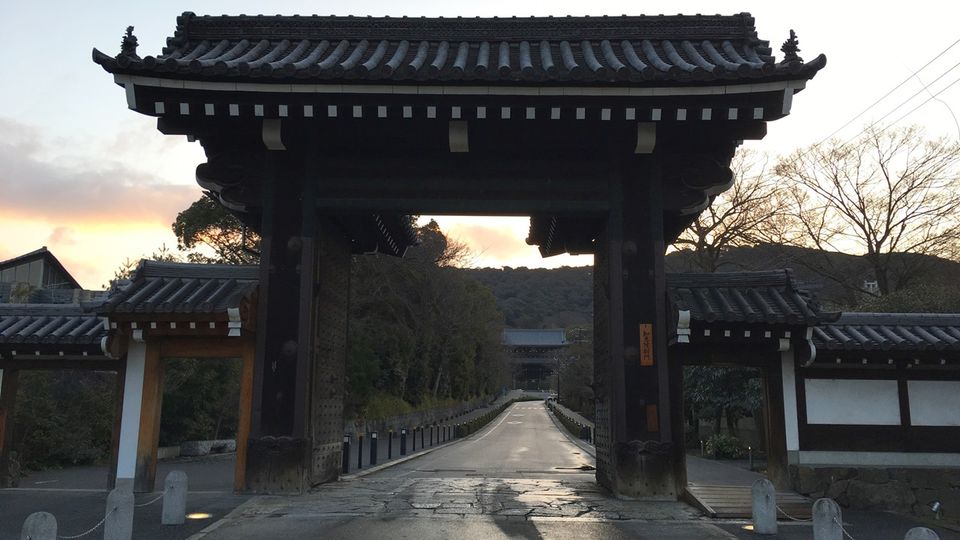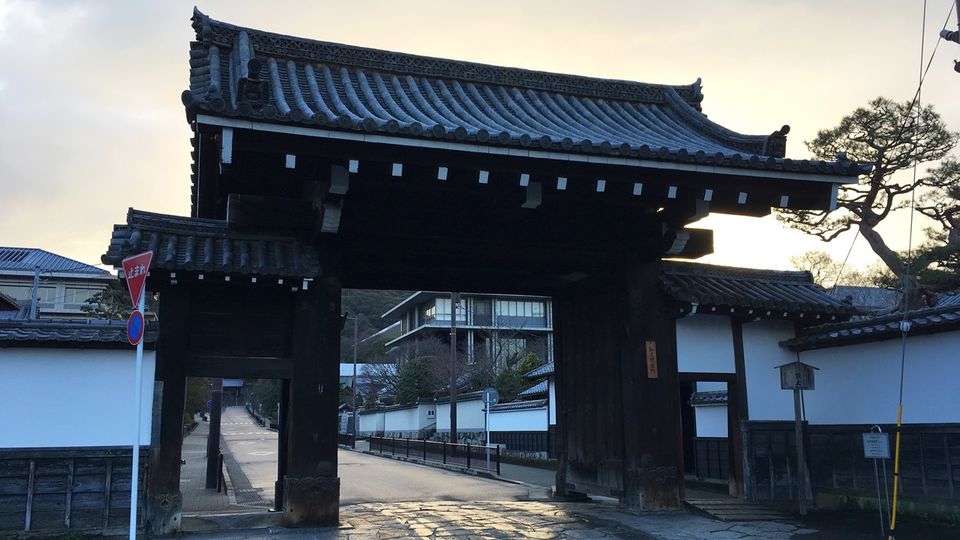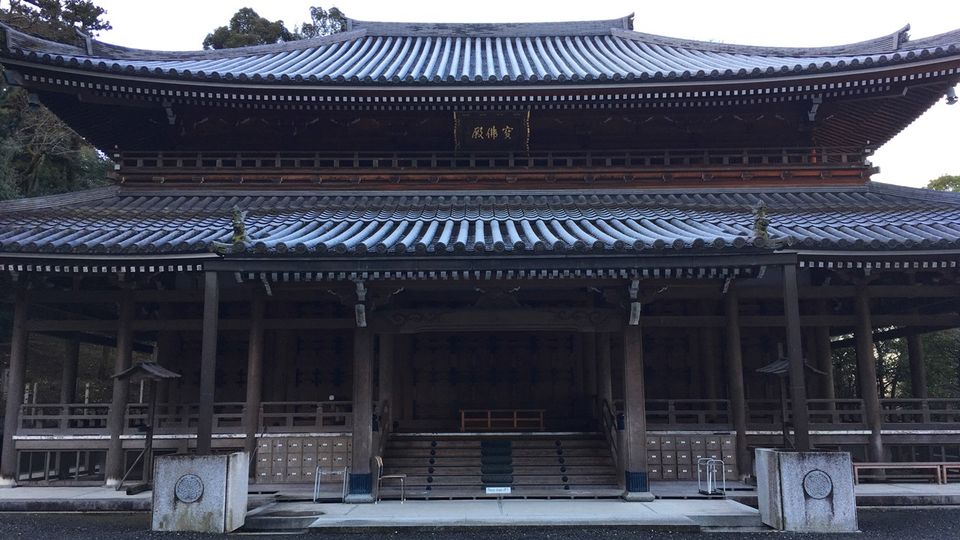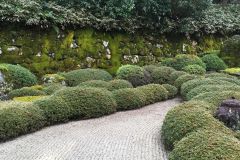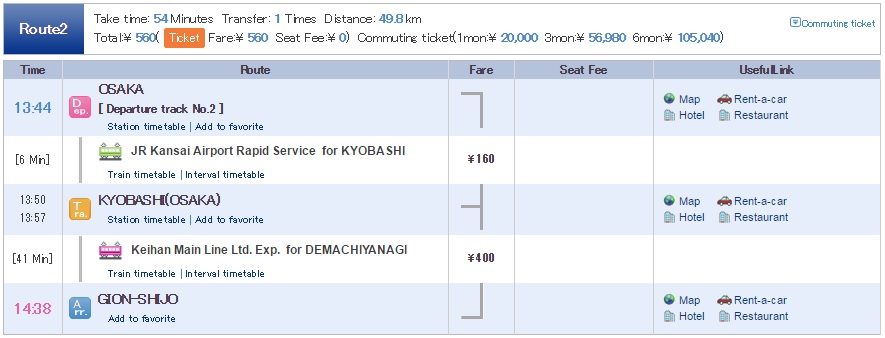Chion-in Temple (知恩院), situated in Higashiyama Ward, Kyoto City, Kyoto Prefecture, is the temple of the Jodo sect of Buddhism.
Temple’s formal name is “Kachozan Chionkyo-in Otani-dera”.
It is the grand head temple of Jodo sect that is one of the greatest factions of the Buddhism in Japan.
In addition, it had a deep connection with the Tokugawa clan (徳川家).
History of Chion-in
Let’s study the history of this temple with me before introducing Chion-in (知恩院).
I think that we can enjoy the sightseeing of this temple more by learning the history of it. XD
Chion-in was founded in the Heian period (平安時代) of 1175 by Honen (法然) who was the initiator of Jodo-shu (浄土宗).
Chion-in is now one of the biggest temples in Kyoto.
However, originally it was not a big temple.
Why would Chion-in became such a big temple?
There are two reasons.
First reason “Ieyasu TOKUGAWA (徳川家康) was the follower of the Jodo-shu.”
Teaching of the Jodo-shu that is the idea of Honen is called ‘Senshu Nenbutsu (専修念仏).’
It’s an open-and-shut thinking, as follows.
All people can be reborn in Amida’s Paradise by reciting ‘Namuamidabutsu (南無阿弥陀仏).’
In Jodo-shu, we can go to the Buddhists’ paradise only praying to Amida Buddha (阿弥陀如来) even if we do not train ourselves.
Jodo sect is popular by these reason from old days.
Tokugawa clan (徳川家) also believed in this Jodo sect of Buddhism from generation to generation.
So, the Tokugawa clan greatly participated in the development of this temple.
Second reason “It is located on the rising ground of Kyoto.”
Because Chion-in is located on the rising ground of Kyoto, it was the place that can look down at the Kyoto Imperial Palace (京都御所).
In the Edo period (江戸時代), the Tokugawa clan (bakufu) and the imperial court did not get along with each other.
Therefore, Ieyasu TOKUGAWA revived this temple to check the Imperial Court.
He expanded this temple grounds from 1608 and built numerous halls.
Although the mitsuba-aoi (三葉葵) which is the Tokugawa family’s crest was exclusively used by the Tokugawa clan, Chioni-n could use it because it was due to the above reasons.
By such the reasons, Chion-in Temple became the big temple.
About Chion-in
Information
Address:Chion-in 400 Rinka-cho, Higashiyama-ku Kyoto, 605-8686
Phone Number:+81-075-531-2111
Foundation:1175
Founder:Honen (法然)
Sect:Jodo-shu (浄土宗)
Principal image:Honen (法然) , Amida Nyorai (Amithaba)
Open (Precincts)
| Dec – Feb | 6:00~16:00 |
| Mar – May, Sep – Nov | 5:30~16:00 |
| Jun – Aug | 5:00~16:00 |
Open (Garden)
| Hojo Garden | 9:00~15:50 |
| Yuzen-en Garden | 9:00~16:00 |
Admission Fee (Hojo Garden)
| Adults | 400 yen |
| Elementary / Junior high students | 200 yen |
*Precincts is free of charge.
Other information
・Please ask temple’s staff where you can take photos and videos.
・Worship method of a shinto shrine and a buddhist temple, please refer to the following article.
Temple’s Website
Next, Let’s go to see highlights of this temple with me!
Highlights of Chion-in
- 新門:Shin-mon gate
- 古門:Furu-mon gate
- 三門(国宝):San-mon gate (National treasure)
- 黒門:Kuro-mon gate
- 南門:Minami-mon gate (South gate)
- 北門:Kita-mon gate (North gate)
- 四脚門:Shikyaku-mon gate
- 武家門:Buke-mon gate
- 唐門(重要文化財)*:Kara-mon gate (important cultural property)*
- 御影堂(国宝):Miei-do hall (National treasure)
- 阿弥陀堂:Amida-do hall
- 霊塔(多宝塔): Rei-to pagoda
- 真葛庵:Makuzu-an (Tea House)
- 寶佛殿:Hobutsu-den hall (New charnel house)
- 納骨堂:Nokotsu-do hall (Old charnel house)
- 大鐘楼(重要文化財):Daishoro (Great bell tower) (important cultural property)
- 経蔵(重要文化財):Kyozo (sutra repository) (important cultural property)
- 写経塔:Shakyo-to pagoda
- 勢至堂(重要文化財):Seishi-do hall (important cultural property)
- 紫雲水:Shiun-sui
- 法然上人御廟:Gobyo (Honen’s Mausoleum)
- 集会堂(重要文化財):Shue-do hall (important cultural property)
- 新玄関:Shin-genkan
- 大庫裏(重要文化財)*:O-kuri (important cultural property)*
- 小庫裏(重要文化財)*:Sho-kuri (important cultural property)*
- 大方丈(重要文化財)*:O-hojo (important cultural property)*
- 小方丈(重要文化財)*:Ko-hojo (important cultural property)*
- 方丈庭園*:Hojo garden*
- 権現堂*:Gongen-do hall*
This mark (*) is a pay area.
新門:Shin-mon gate
It has a role of the entrance of the south approach to the temple.
古門:Furu-mon gate
It has a role of the entrance of the north approach to the temple.
三門(国宝):San-mon gate (National treasure)
San-mon gate was built by Hidetada TOKUGAWA (徳川秀忠) in 1621 of the Edo period.
It has been designated as a national treasure, and is one of the three greatest gate in Japan.
黒門:Kuro-mon gate
南門:Minami-mon gate (South gate)
It has a role of the entrance from Maruyama Park (円山公園).
北門:Kita-mon gate (North gate)
四脚門:Shikyaku-mon gate
武家門:Buke-mon gate
It has a role of the entrance of Shue-do holl (集会堂) and Hojo garden (方丈庭園).
唐門(重要文化財)*:Kara-mon gate (important cultural property)*
It was built in 1641 of the early Edo period, and it has been designated as an important cultural property.
御影堂(国宝):Miei-do hall (National treasure)
It has been designated as a national treasure.
But currently covered by scaffolding for a major restoration…(until spring 2019).
This building was reconstructed by Iemitsu TOKUGAWA (徳川家光) in 1639 of the Edo period.
阿弥陀堂:Amida-do hall
It was reconstructed in 1910 of the Meiji period (明治時代).
Amida Nyorai (阿弥陀如来:Amithaba) of the principal image of this temple is enshrined in this building.
霊塔(多宝塔): Rei-to pagoda
真葛庵:Makuzu-an (Tea House)
It has a role of the tea house.
寶佛殿:Hobutsu-den hall (New charnel house)
It was built in 1992 which has a role of the new charnel house.
納骨堂:Nokotsu-do hall (Old charnel house)
It was built in 1930 which is the old charnel house.
大鐘楼(重要文化財):Daishoro (Great bell tower) (important cultural property)
It was built in 1678 of the middle Edo Period which has been designated as an important cultural property.
The bell of this bell tower is one of the three greatest bell in Japan.
(The others are Todai-ji’s bell and Hoko-ji’s bell.)
経蔵(重要文化財):Kyozo (sutra repository) (important cultural property)
It was built in 1621 of the early Edo Period which has been designated as an important cultural property.
Issai-kyo (Complete Collection of Scriptures) is kept in this building.
写経塔:Shakyo-to pagoda
A sutra copied by hand is kept in this pagoda.
勢至堂(重要文化財):Seishi-do hall (important cultural property)
It was reconstructed in 1530 of the Muromachi Period (室町時代) which has been designated as an important cultural property.
This building is the oldest building in this temple.
紫雲水:Shiun-sui
This spring water is called ‘Shiun-sui (the water of purple cloud).’
When Honen died in 1212, it is said that a purple cloud was reflected in the surface of this water.
法然上人御廟:Gobyo (Honen’s Mausoleum)
It was built in 1613 of the Edo period.
It is built in the highest place of the precincts of this temple.
集会堂(重要文化財):Shue-do hall (important cultural property)
It was built in 1635 of the early Edo Period which has been designated as an important cultural property.
新玄関:Shin-genkan
It has a role of the entrance of O-kuri.
大庫裏(重要文化財)*:O-kuri (important cultural property)*
It was built in 1641 of the early Edo Period which has been designated as an important cultural property.
It is also called ‘Sekko-den (雪香殿).’
小庫裏(重要文化財)*:Sho-kuri (important cultural property)*
It was built in 1641 of the early Edo Period which has been designated as an important cultural property.
It is also called ‘Gekko-den (月光殿).’
大方丈(重要文化財)*:O-hojo (important cultural property)*
It was built in 1641 of the early Edo Period which has been designated as an important cultural property.
小方丈(重要文化財)*:Ko-hojo (important cultural property)*
It was built in 1641 of the early Edo Period which has been designated as an important cultural property.
方丈庭園*:Hojo garden*
It is the circuit style garden around a big pond (池泉回遊式庭園).
権現堂*:Gongen-do hall*
It was built in 1974.
The mortuary tablets of Ieyasu TOKUGAWA, Hidetada TOKUGAWA and Iemitsu TOKUGAWA are enshrined in this building.
Photos of Chion-in
Kyoto Higashiyama Hanatouro
Illuminations event called ‘Kyoto Higashiyama Hanatouro (京都東山花灯路)‘ is held every spring in Higashiyama, Kyoto.
Chion-in is one of the venue of this events.
Goshuin (Red ink stamp) of Chion-in
Goshuin of this temple is “Honen Shonin (法然上人)”.
How to get to Chion-in
Nearest station is Gion-Shijo Station or Higashiyama Station.
We can also go by bus from JR Kyoto Station.
From Osaka Sta. to Gion-shijo Sta. (by train)
Timetable and Route Search (train)
1.Get on the JR Loop Line from Osaka Station to Kyobashi Station and change to the Keihan Railway.
2.Get on the Keihan Railway from Kyobashi Station to Gion-shijo Station.
From Namba Sta. to Gion-shijo Sta. (by train)
Timetable and Route Search (train)
1.Get on the Osaka Metro Midosuji-Line from Namba Station to Yodoyabashi Station and change to the Keihan Railway.
2.Get on the Keihan Railway from Yodoyabashi Station to Gion-shijo Station.
From Kyoto Sta. to Gion-shijo Sta. (by train)
Timetable and Route Search (train)
1.Get on the JR Nara Line from Kyoto Station to Tofukuji Station and change to the Keihan Railway.
2.Get on the Keihan Railway from Tofukuji Station to Gion-shijo Station.
From Gion-Shijo Station (on foot)
It’s about 20 minutes (1 km) on foot.
no images were found
Get on a bus from JR Kyoto Station
Timetable and Route Search (bus)
Please get on a Kyoto City Bus No.206 (Kyoto Sta.[D2] bus stop) and get off Chionin-mae (Chionin Temple) bus stop.
Bus company:Kyoto City Bus
Routes/Destination:No.206[Bound for Gion Via Kiyomizu-dera Temple]
Boarding bus stop:Kyoto Sta.[D2]
Alighting bus stop:Chionin-mae (Chionin Temple)
Bus fare:230 yen
Time required:About 23 min
Take a taxi
From Kyoto Station:about 1,800 yen (10 minutes)
From Gion-Shijo Station:about 720 yen (3 minutes)
・Let’s show a taxi driver the following phrase.
・If you want to call a taxi, let’s show the following phrase.
・Phone number of taxi dispatch (Around Kyoto Sta.)
Hotel search & reservation around Chion-in
How did you like it?
Have a nice trip!









